Cídé Temple 慈德宮 (also romanized as Tzude Temple) is an unusual manifestation of Taiwanese folk religion situated on a hillside overlooking the historic town of Caotun in northwestern Nantou, Taiwan. Constructed in 1984, it was inspired by the recurring dreams of a local fruit farmer, Zhāng Wénqǐ (張文杞), and funded by generous donations from the community. The main hall of the temple takes the form of a bottle gourd (葫蘆) laying on its side, and the entrance is covered by a conical bamboo farmer’s hat (斗笠). These features give the temple its peculiar shape, but they were not chosen at random; the design is inspired by ancient Chinese mythology, albeit with an idiosyncratic twist.
I first visited this temple in 2015 after reading about it in an article from The Daily Bubble Tea. At the time I knew very little about Taiwanese temple culture—and hadn’t learned too much more by the time I returned for a second visit in 2017. Brief conversations with volunteers at the temple and a perusal of Chinese language blogs was enough to establish the proximate reason for this temple’s distinctive design, namely that it came from a dream. But I found this explanation somewhat unsatisfying, and was left wondering: What inspired that dream? Why the bottle gourd and farmer’s hat? Was there any deeper meaning to these choices? While drafting this article I searched high and low for a frame of reference that would help bring it all into focus—and I found it in the legend of Nǚwā Mends the Heavens (女媧補天).
Nüwa is the mother goddess of ancient Chinese mythology, roughly analogous to Eve of the Abrahamic faiths. She is also the daughter of the Jade Emperor (玉皇), the highest-ranking god in the Taoist pantheon regularly found in Taiwanese temples. According to legend, she came to earth and was happy for a while, but soon yearned for company. To alleviate her loneliness Nüwa fashioned the first human beings out of riparian clay1 and animated them with her breath. Not wanting to continue the work all by herself, she introduced the custom of marriage (and by extension, procreation), and her cherished offspring soon populated the earth2.
Early human civilization prospered for a period of time, but catastrophe struck when the gods went to war. In most tellings the primary antagonist is the water god Gònggōng (共工), who rips a hole in the sky, knocks over one of the four cosmographic pillars holding the heavens aloft3, and instigates a devastating flood. Nüwa intervenes to save humankind from disaster by performing a number of miraculous acts: she melts five coloured stones representing Wǔxíng (五行), the Five Elements of classical Chinese philosophy, to form a magical liquid to seal the hole in the sky; she battles the mythical Áo (鰲), a gigantic turtle, and severs its enormous legs, using them to prop up the heavens and restore order to the world4; and finally, she saves humankind from the floodwaters by packing them onto an enchanted golden bottle gourd until the deluge recedes.
This temple is not directly inspired by the legend of Nüwa, nor is she venerated here5, but telling her story provides a relatively concise introduction to some of the traditional motifs informing the design. Let’s begin with the large golden censer6 immediately outside the main entrance. This censer rests on the back of a golden turtle, almost certainly representing the gigantic turtle Ao, and is surrounded by the planar outline of another stylized bottle gourd. Apart from its appearances in the Nüwa myth, bottle gourds are frequently invoked as symbols of health, medicine, longevity, and even immortality7, but in this context there might also be a subtext of salvation.
While the meaning of the bottle gourd in traditional Chinese mythology is well-established, the farmer’s hat is somewhat more mysterious—and perhaps even unique to this temple8. In this context it represents the heavens, for it is round and perched on four columns, an obvious reference to the cosmographic pillars of myth. A painting on the underside of the farmer’s hat depicts what appears to be the Nine Emperors (九皇大帝) of heaven, a mirror image of the legendary Nine Provinces (九州) of ancient China9. Every emperor is associated with an asterism (or constellation, if you prefer) faintly visible in the innermost recesses of the farmer’s hat. Finally, if you look closely you’ll also find some characters vertically inscribed between two figures; this is the painter’s signature and phone number.
Compared to the visual feast of the exterior, the inside of this temple is rather sparse. Most of the interior of the bottle gourd is bare concrete, a rare sight in a country where temples go all-out with woodcarvings, painted murals, ceramic dioramas, and other decorative elements. There is only one altar, but it is adorned with an impressive array of 56 idols, many of which are cloaked in orange robes. The most important of these gods are those who directed (through the dreams of the fruit farmer) the construction of this unusual temple. They are the larger gold-faced figures at the very back—and they do not appear to be enshrined anywhere else in Taiwan10.
The exterior of the bottle gourd portion of the temple is decorated with dragons on the right, representing yang, and fènghuáng (鳳凰) on the left, representing yin11. An enormous flower, presumably a sacred lotus, is hidden behind the bottle gourd temple, but its exact meaning in this context eludes me. The hillside beyond features a pond surrounded by statues of various immortals, two golden dragons, an elephant, and more. After a short hike you’ll find the magnificent 300 year-old banyan tree from which this area gets its name12, and a modest shrine to the God of Land, Tǔdìgōng (土地公).
The last of the “three wonders” of this temple is the 19 Dragon Pillar (Shíjiǔ Lóngzhù 十九龍柱). It is 30 meters tall, decorated with small statues of the 18 Arhats, and topped by a statue of Guanyin, the Goddess of Mercy. But that’s not all—after dark the eyes of the dragons light up with 20,000 watts of power, beaming into the night. Ultimately the column is meant to act as a sort of spiritual lighthouse overlooking Caotun, hence the sign at the base of the column: Heavenly Column Protecting the Country (護國天柱).
At first glance this temple might seem ridiculous or even “creepy” (the actual term used by one foreign blogger), but a closer look reveals a site steeped in myth and meaning. Taiwanese folk religion is informed by millennia of tradition but plenty of adherents operate outside of established codes and hierarchies. Personally I find it quite fascinating how many of Taiwan’s most unusual religious and spiritual sites are the result of common people pursuing their dreams13. Perhaps by shining a light on the mysterious bottle gourd temple (葫蘆廟) I can awaken your curiosity and interest in exploring this obscure element of Taiwanese temple culture.
- Technically this would be loess eroded from the Huángtǔ Plateau (黃土高原) and deposited along the banks of the Yellow River (黄河), one of the cradles of Chinese civilization. ↩
- Far more could be said about this creation myth than what I have imparted in this brief overview. This article provides an accessible introduction to the larger story, which also involves her brother and partner Fúxī (伏羲). More links to these myths in English can be found here and here. ↩
- Ancient Chinese cosmology describes the earth as a flat, square surface with four pillars (Sìwéi 四維) at the corners holding up the round canopy of the sky (Tiānyuán Dìfāng 天圓地方, which literally translates to “round heavens, square earth”). Formally known as the Canopy-Heaven Hypothesis (蓋天說), it was described in the Zhōubì Suànjīng (周髀算經), a Zhou Dynasty mathematical treatise sometimes translated as “The Gnomon of the Zhou”, but its origins are lost in prehistory. Incidentally, Siwei has an incredible number of English translations, making it a slippery subject to research. Among other examples, I’ve seen wei translated as pillars, principles, norms, cardinal virtues, social controls, and social bonds. The more archaic use of the term, in relation to the four pillars holding up the heavens, also describe cords, ropes, and poles. The reason for this is simple enough: the symbolism of four supportive structures upholding the universe is a regularly occurring theme in the culturally Chinese world. Two reformulations relevant to this inquiry are those of Confucius, who adapted Siwei to describe four principles upholding society, and Sun Yat-sen, founding father of the Republic of China, who adapted Confucian thought in his famous treatise, the Three Principles of the People. Today the concept lives on as the Four Pillars and Eight Virtues (Sìwéi Bādé 四維八德) of KMT party ideology, but this temple references the most ancient meaning of the concept. ↩
- In some tellings this makeshift pillar was not exactly the same dimensions as the original, causing the earth to slope from northwest to southeast—an explanation given for the drainage patterns of the major Chinese rivers as well as the apparent motion of various heavenly bodies. ↩
- Despite her divine status Nüwa is not commonly enshrined in Taiwanese temples. There are a few exceptions, of course, most prominently the Goddess Nüwa Temple (女媧娘娘廟) in Fengbin. ↩
- These tripodal censers are generally known as xiānglú (香爐). This article (in Chinese) is a good resource for anyone interesting in learning more about these fixtures of Taiwanese temples. ↩
- In ancient China travelling doctors carried healing elixirs in such gourds, which is one reason they feature in so many myths (including that of Nüwa). One example worth mentioning is that of Hú Gōng (壺公, literally “Gourd Master”), who appears in the 4th century Shénxiān Zhuàn (神仙傳). In this tale, Hu Gong sells cures at a local market, but one of the townspeople notices he disappears into a bottle gourd every night after closing shop. Following this discovery, the gourd master invites the villager into the gourd, which turns out to be a portal to an entire world of immortals. Another more widely known example is that of Jì Gōng (濟公), the Drunken Monk, who is always depicted with a bottle gourd filled with wine (and not strictly the medicinal variety). Although not exactly equivalent, the bottle gourd has similar cultural associations as the Caduceus (or more properly the Rod of Asclepius) in the West. ↩
- Here I must resort to some informed speculation, for the sources I consulted while drafting this article did not provide a satisfactory explanation. The small handful of Taiwanese bloggers writing about this temple describe its intriguing features without providing much in the way of background information, presumably because most readers would already be familiar with traditional culture. ↩
- Nine is considered to be the most divine numeral, for it has the highest value of any single digit. Heaven is often conceived as having nine layers (九重天) or other such divisions. The Nine Emperors are commonly venerated in culturally Chinese folk religion, especially in diasporic Chinese communities in Southeast Asia. It is also worth mentioning that the identities of the Nine Emperors varies according to tradition; this Chinese language Wikipedia entry has more on that if you’re interested. ↩
- Search for the names of the gods mentioned in Chinese languages blog posts about this temple (for example here, here, here, here) and you’ll find almost no other results. Many gods have multiple names and honorary titles so there’s a chance these deities are found elsewhere. If you’re interested in doing your own research the primary deity is named 南無福德如來佛祖. ↩
- Fenghuang is sometimes translated in English as phoenix, since both mythical creatures are birds, but this is somewhat misleading. Even more confusing: these creatures were often depicted as a male-female pair but at some point in history this was collapsed into a single female representation usually paired with a (male) dragon. ↩
- Róngshùlǐng (榕樹嶺), or Banyan Ridge. ↩
- Another great example of an unusual temple inspired by dreams is the so-called Changhua Shell Temple. ↩
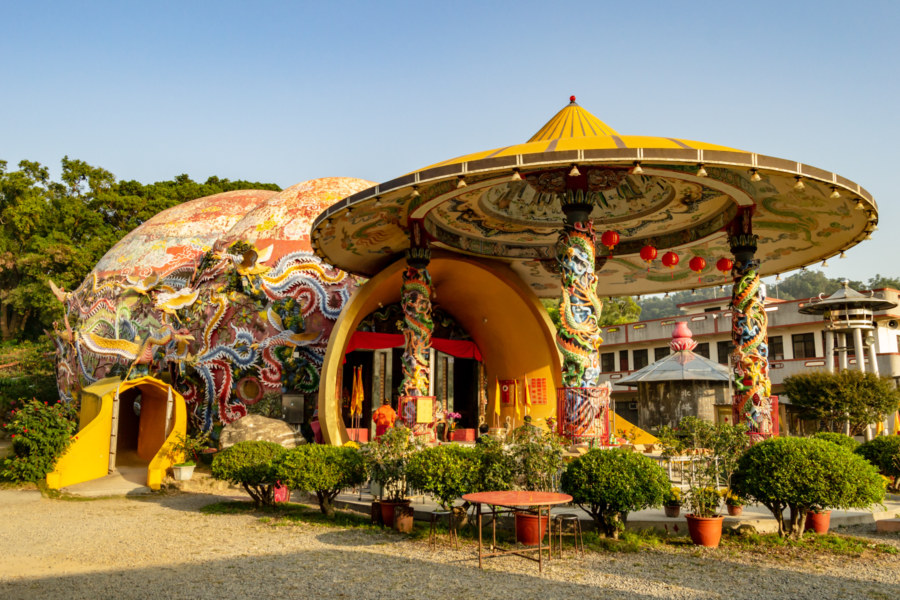
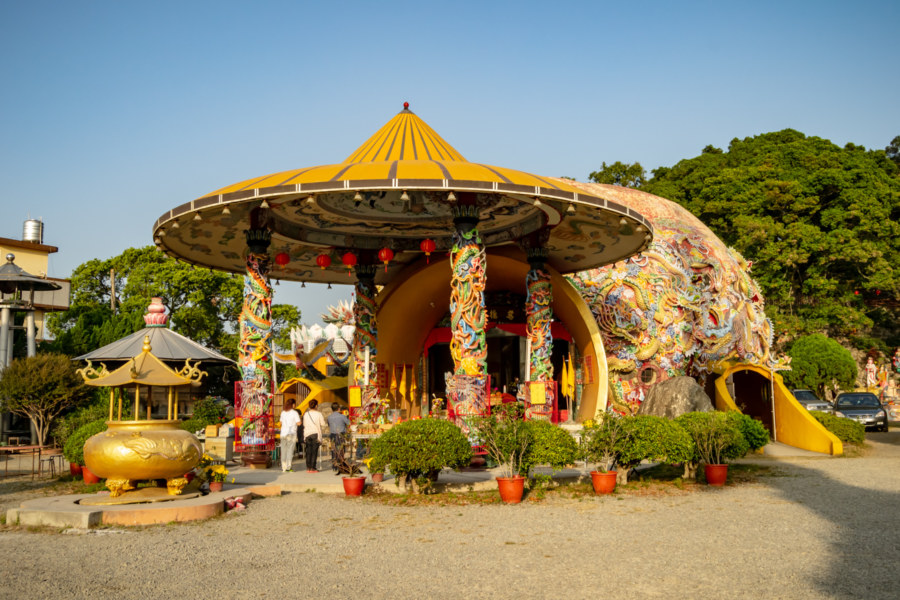
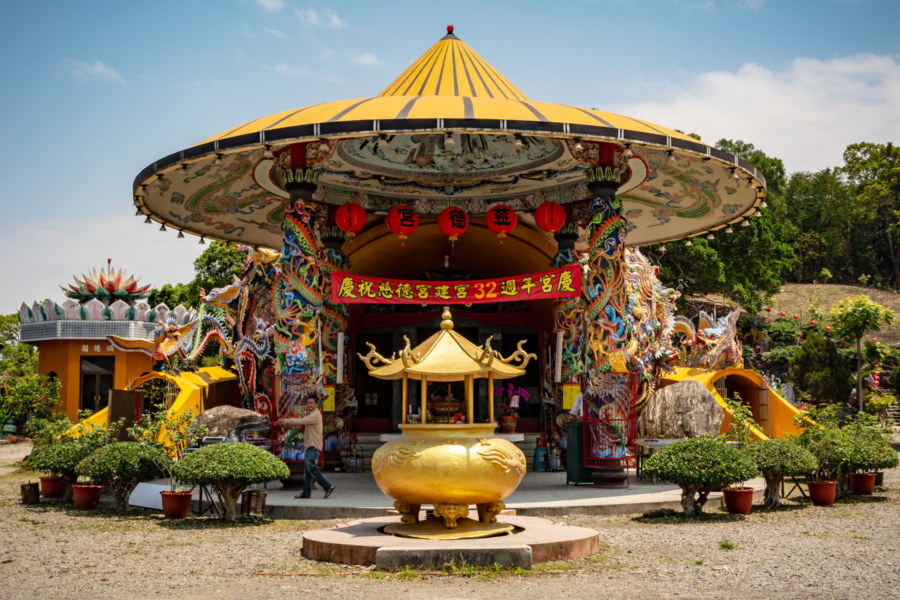
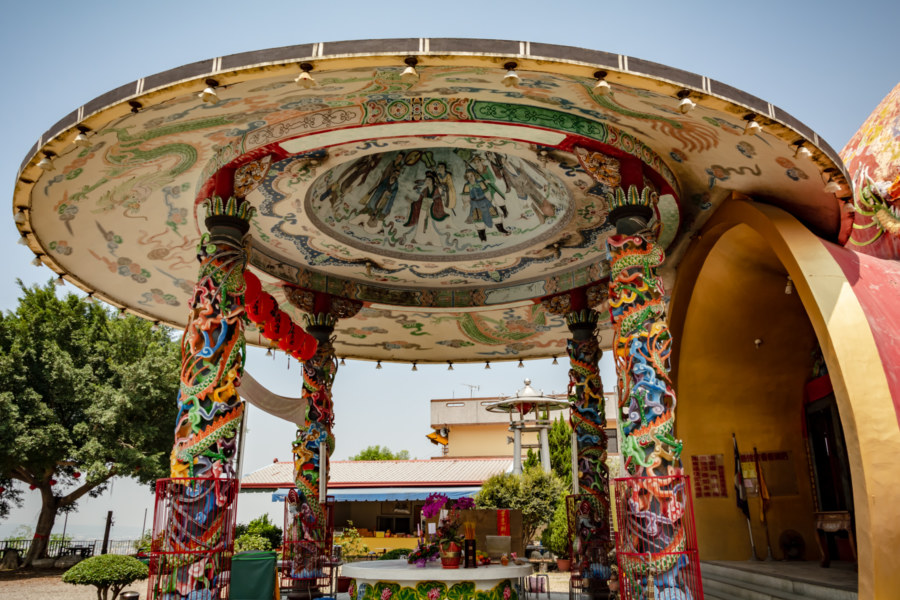
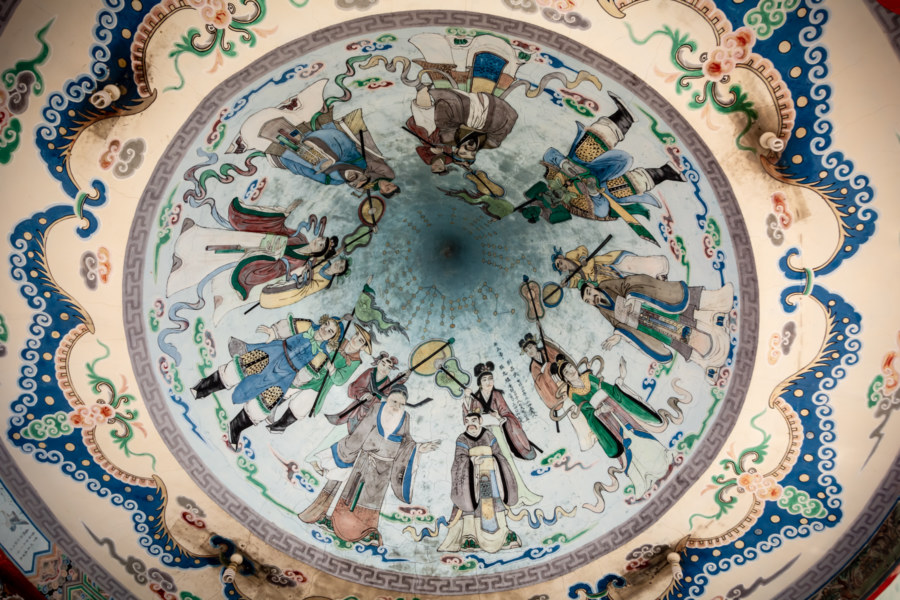
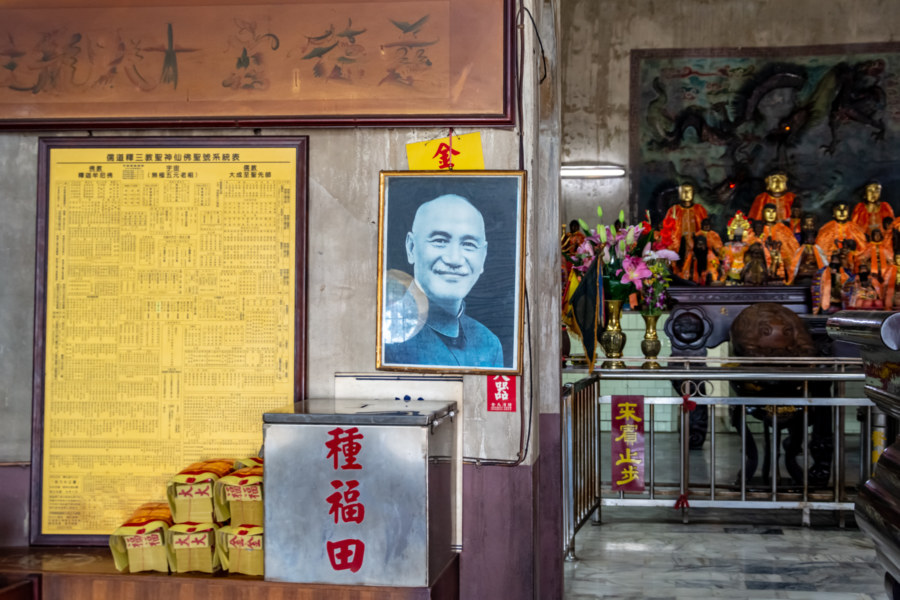

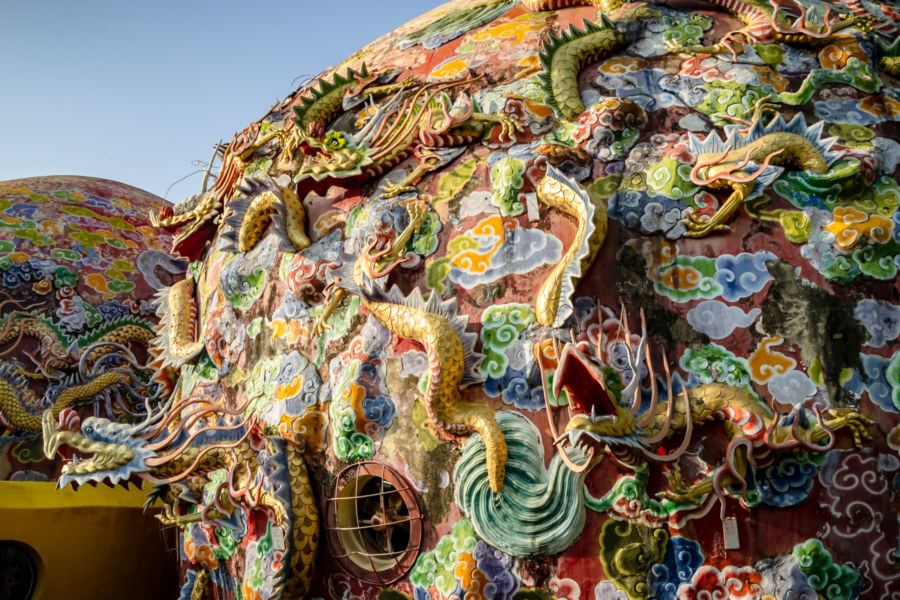
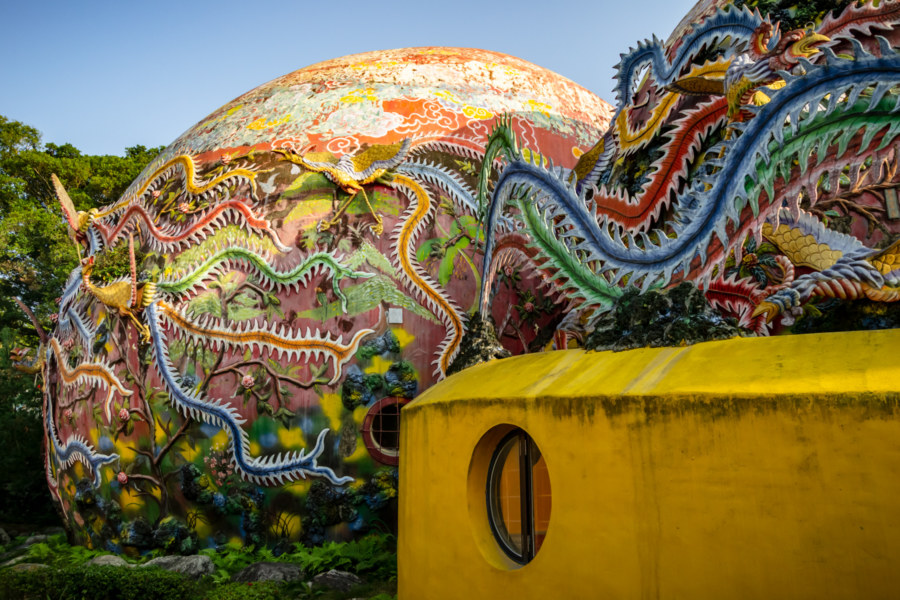

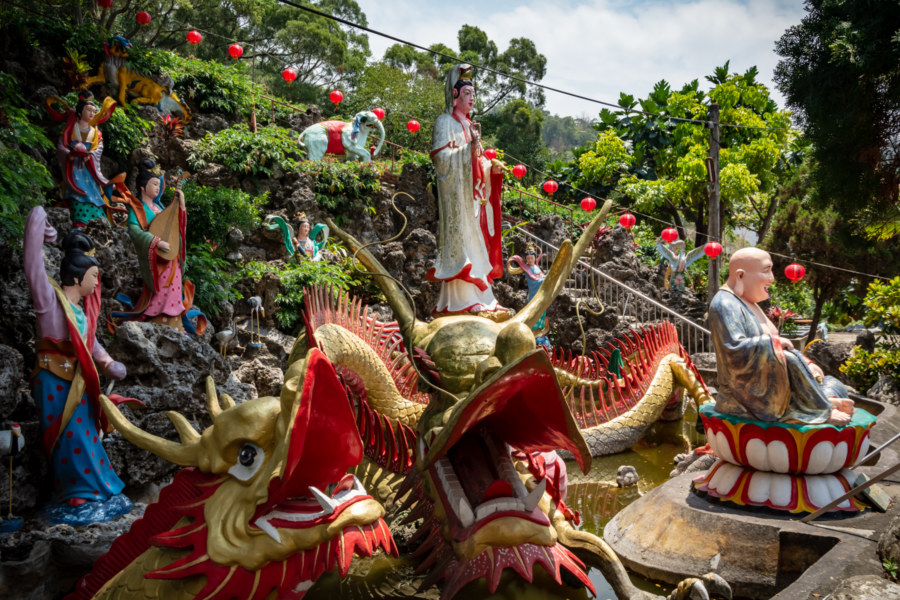

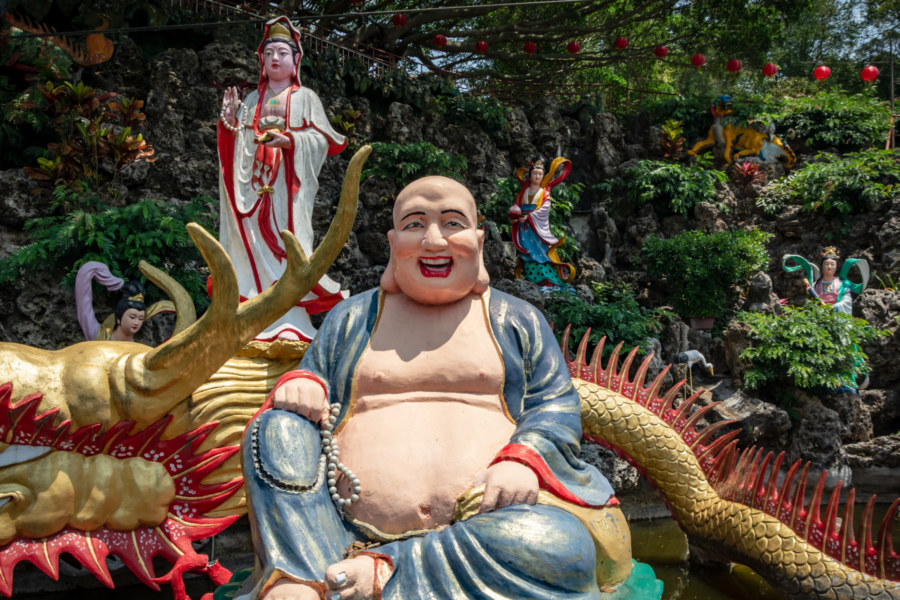
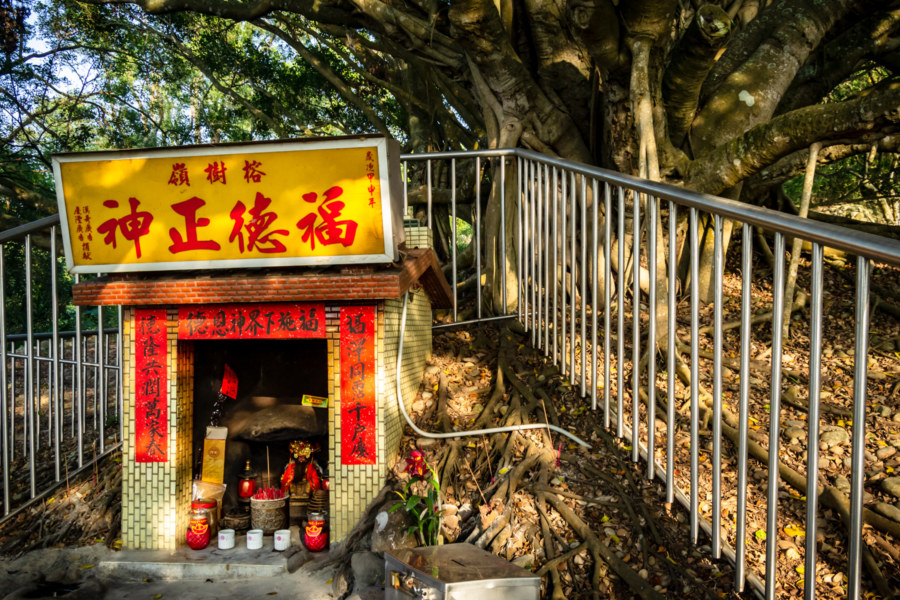
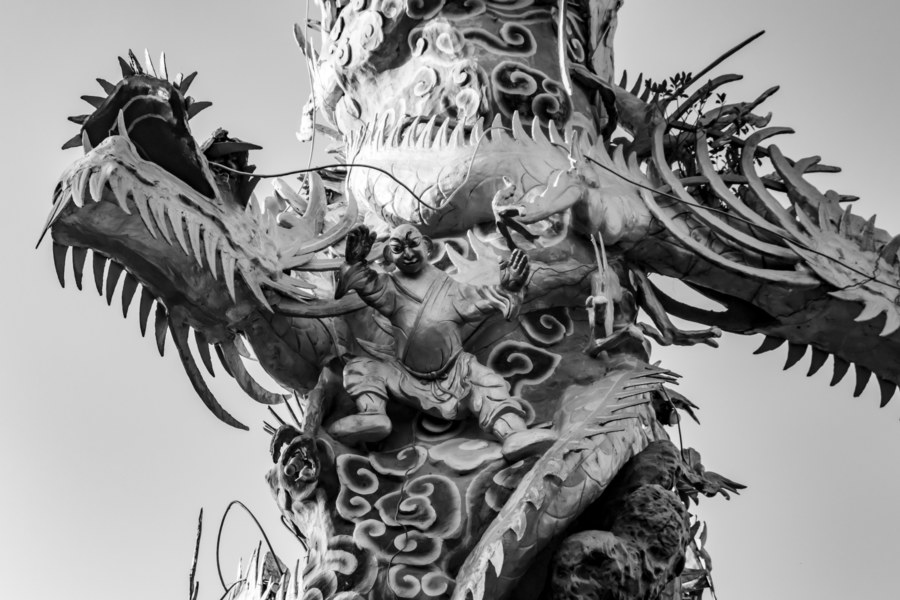
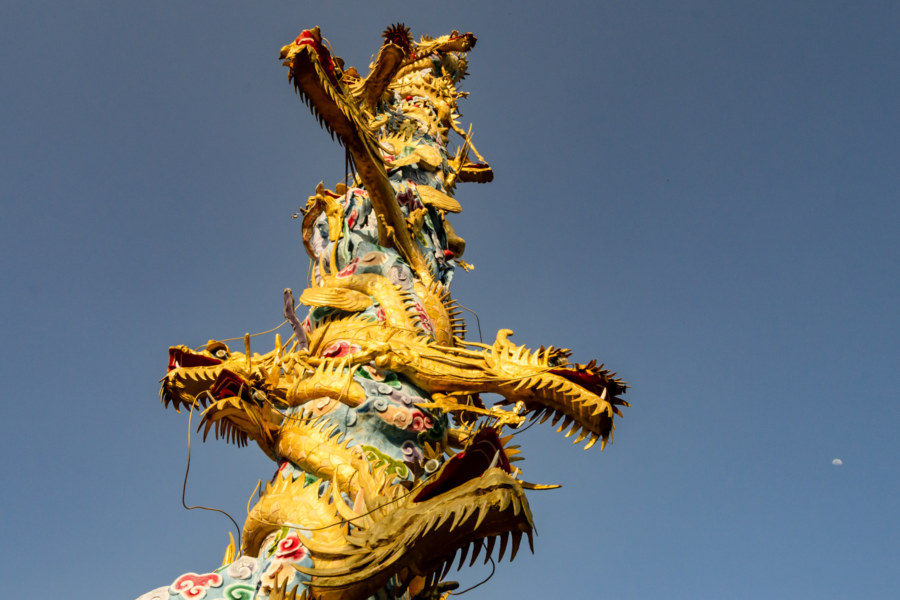
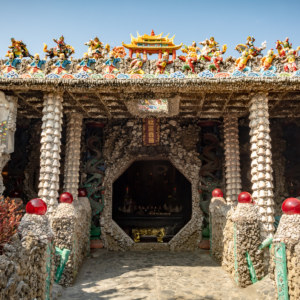
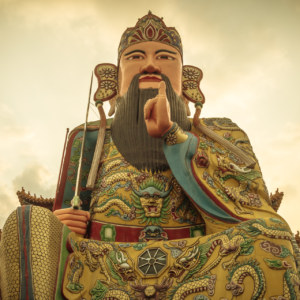
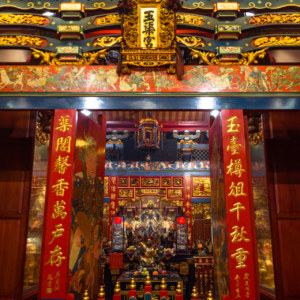
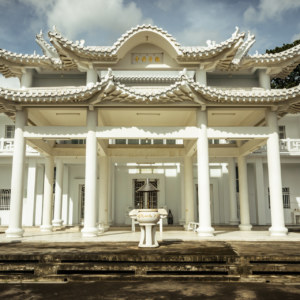

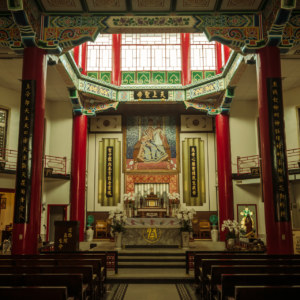
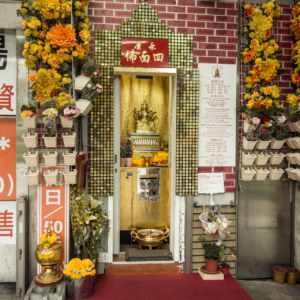
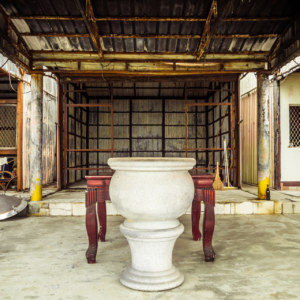

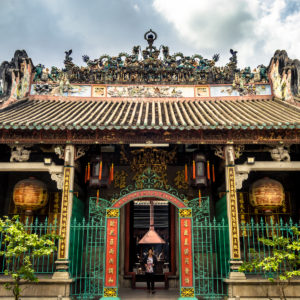
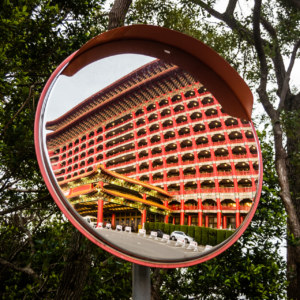
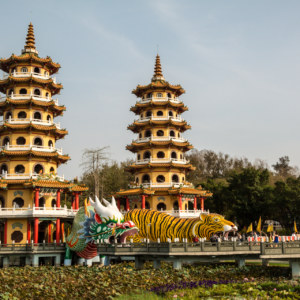
Amazing post: informatiove and interesting. Thanks a lot!